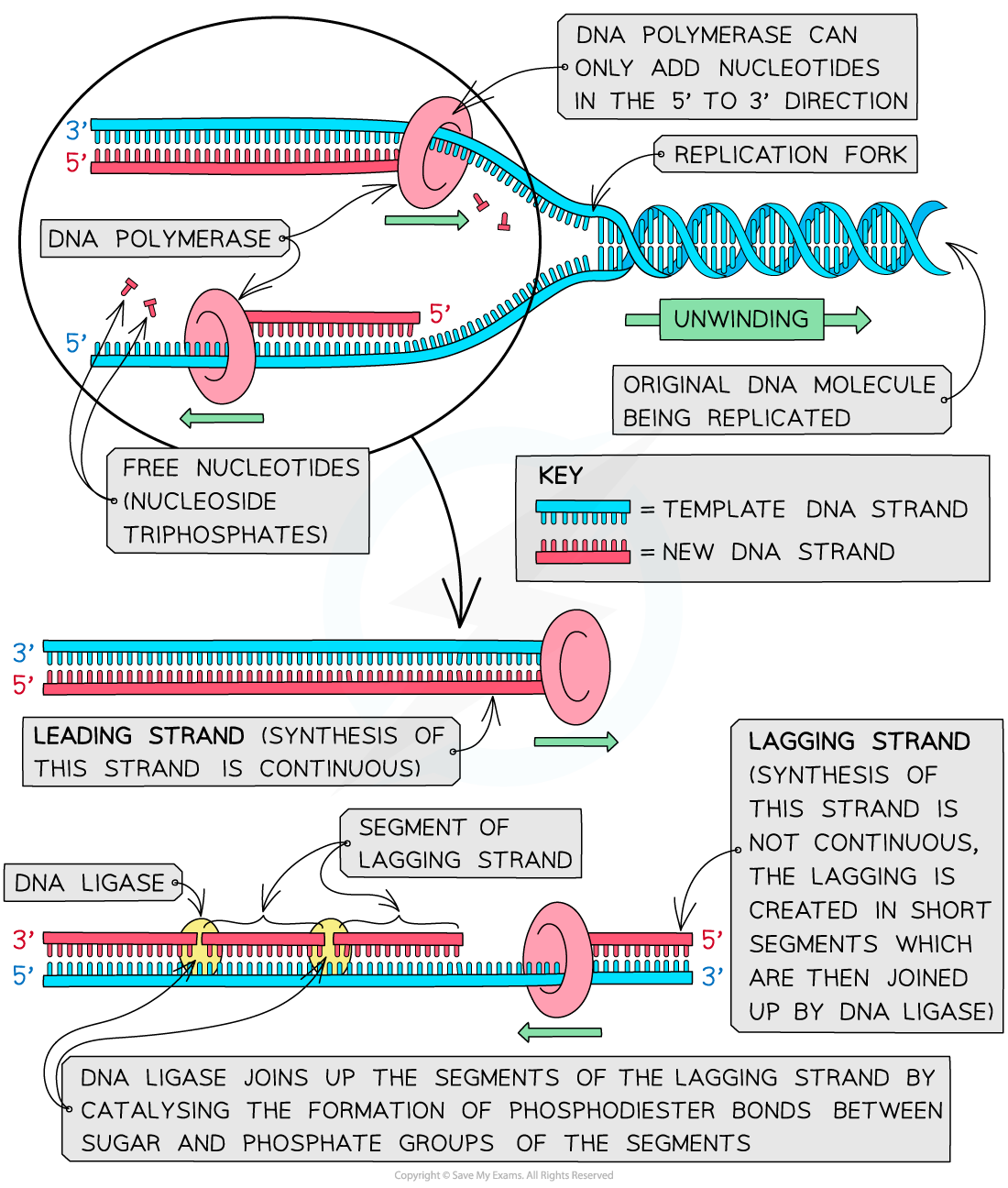Directionality of DNA Polymerase
- Similar to transcription and translation, DNA replication must occur in the 5’ to 3’ direction
- DNA polymerase only works in a 5’ to 3’ direction, adding nucleotides to the 3’ end of a strand of nucleotides
- DNA nucleotides have a phosphate bonded to the 5’ carbon of the deoxyribose sugar
- When DNA polymerase adds a new nucleotide to extend the DNA strand, the 5’ phosphate group of the incoming DNA nucleotide bonds to the free 3’ -OH group on the growing strand
DNA nucleotide structure diagram

DNA nucleotides have a phosphate bonded to the 5’ carbon of the pentose sugar
5' and 3' ends of a DNA strand diagram

When DNA polymerase adds a new nucleotide, the 5’ phosphate group of the incoming nucleotide bonds to the free 3’ -OH group on the growing strand


